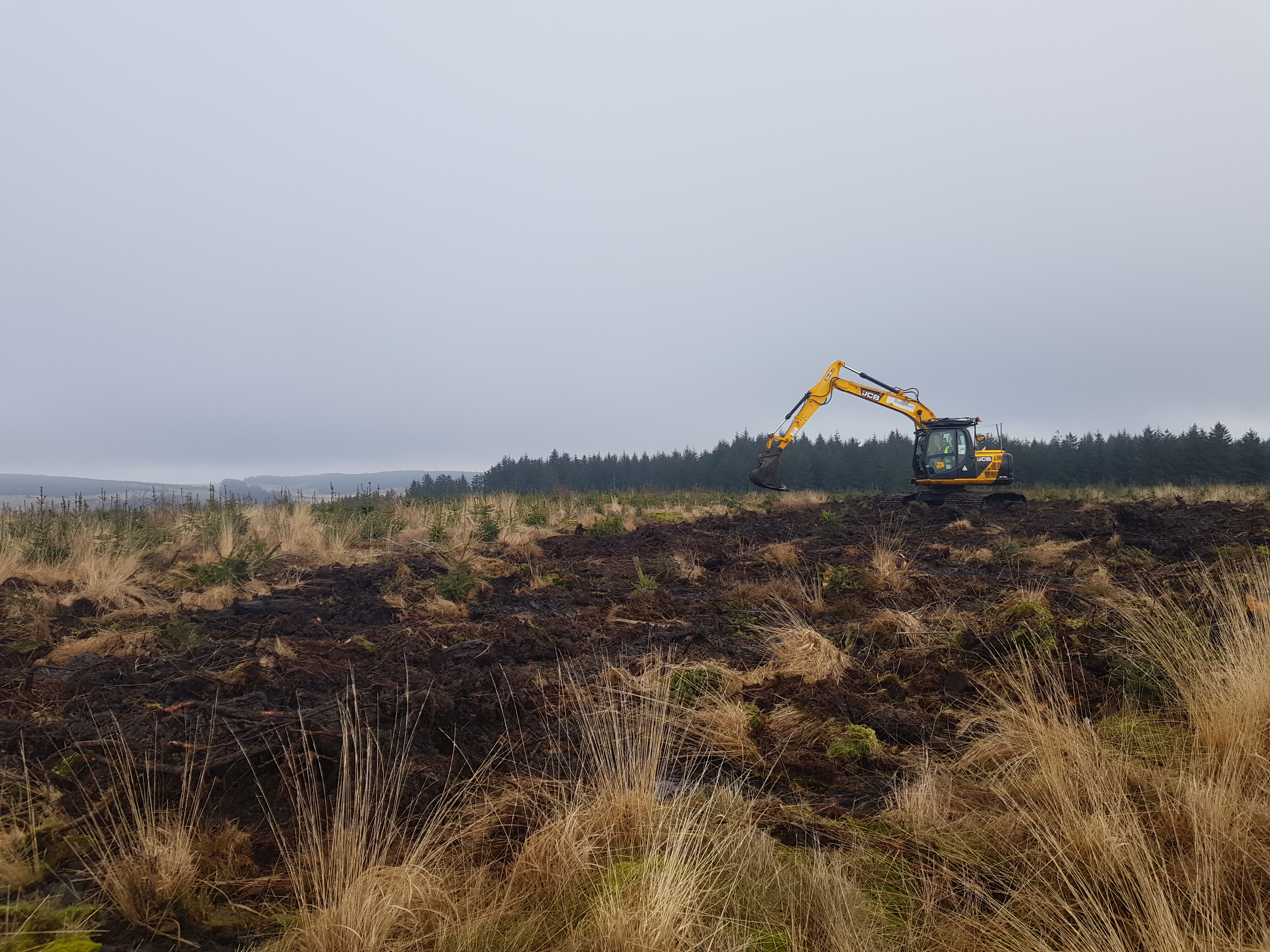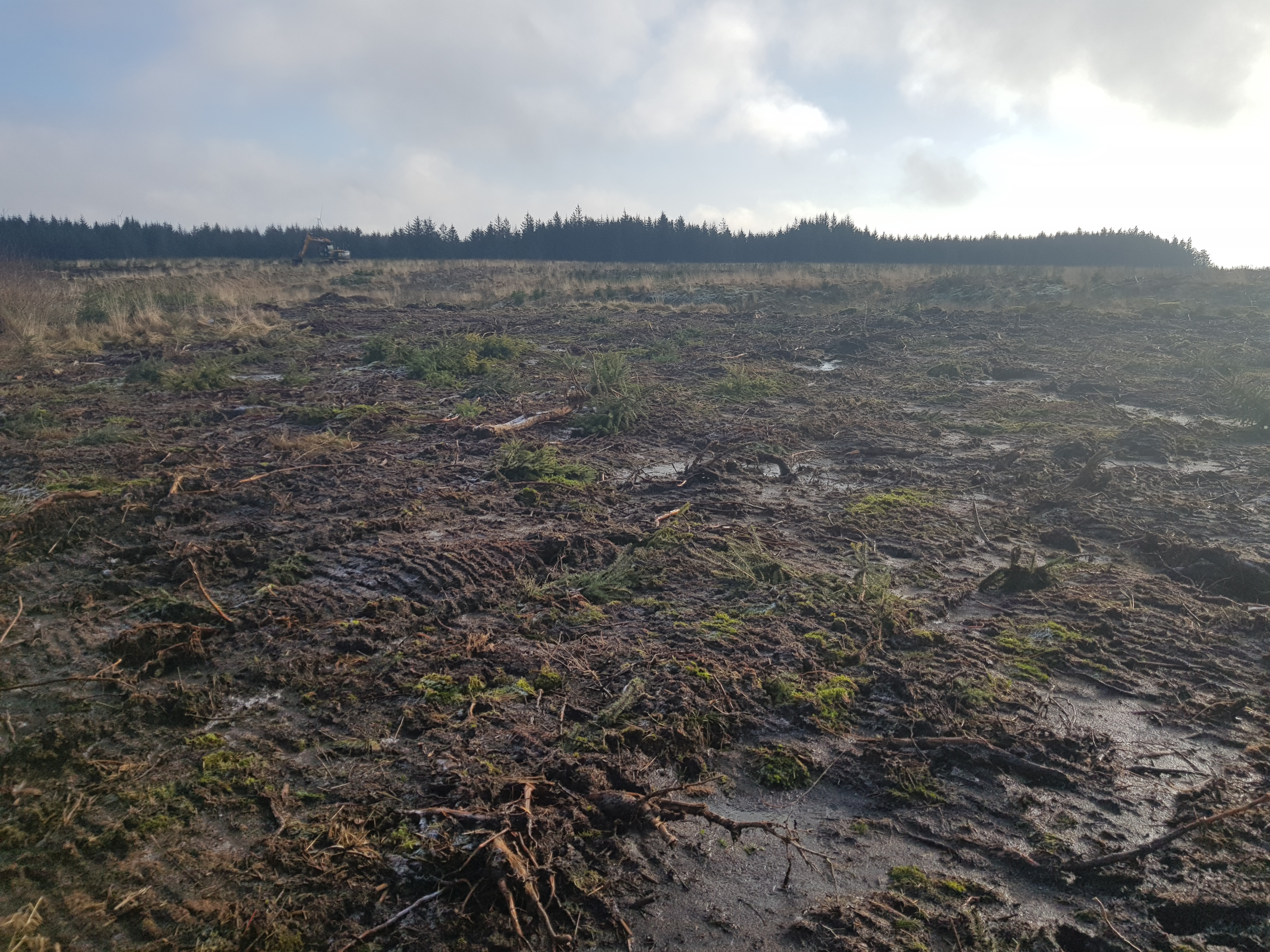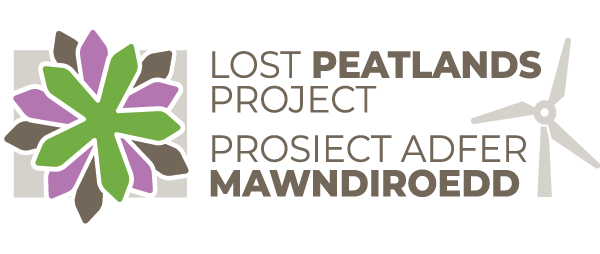Over the coming winters to 2025, the Lost Peatlands Project will be restoring 250ha of previously afforested peatlands. 150ha is within the Pen Y Cymoedd Windfarm as part of Vattenfall’s Habitat Management Plan, and the rest is split over our 3 Habitat Restoration Areas.
In the development phase of the project, extensive surveys were carried out by our project ecologists to determine the current state of our peatland sites, including peat depth and vegetation surveys. This vast area of interconnected blanket bog is up to 6m depth in places, with the average being around 2-3m (a substantial amount of organic carbon!).

Restoration techniques were trialled at a test site in Pen Y Cymoedd windfarm in 2019/2020 and have proved useful in determining our methods. There’s also a wealth of experience to call upon throughout Wales and the UK where other peatland projects are overcoming their own unique challenges. While we can learn important lessons from previous work and the existing scientific literature, we need more evidence for restoration on afforested peatlands. The results from forest to bog restoration from our project will inform best practice for peatland restoration in similar scenarios. You can read more about our commitment to science and research here.
The aim of our restoration works is to create conditions which result in a rise in water tables and the subsequent return to near-natural bog condition. This includes ditch blocking, which will be done in a variety of ways such as wood dams, but the method we’ll mostly be using is peat dams, where peat is taken from a suitable nearby spot and ‘keyed’ into a drainage channel. This technique should result in the most natural form of water retention but working on a previously afforested site creates unique challenges which need special techniques to overcome, including stump flipping and ground smoothing.

By restoring our peatlands, we will contribute to UK Peatland restoration commitments and help in the fight against the climate and biodiversity emergencies declared by governments around the world. We will make our precious peatlands more resilient to climate change and put a halt to ongoing degradation of these habitats. We will also learn how best to achieve this in afforested sites, contributing to the development of best practice throughout Wales and beyond.
